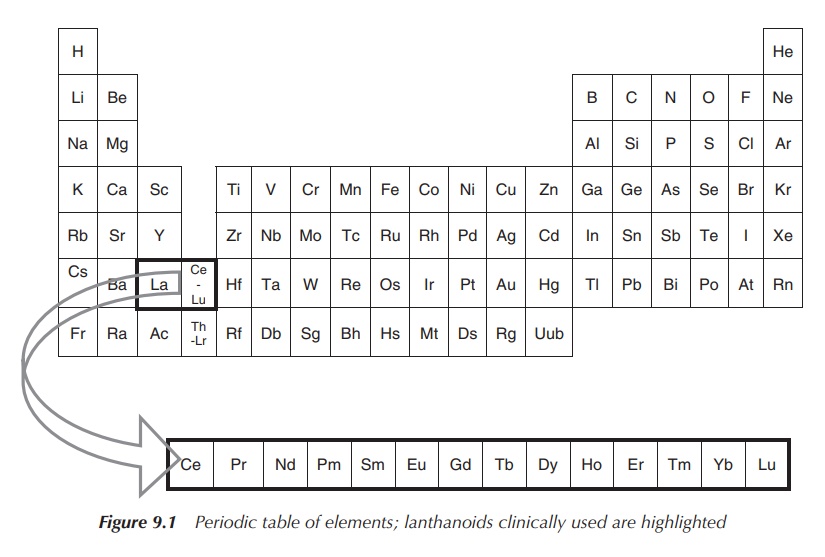Biology and toxicology of lanthanoids
| Home | | Inorganic Pharmaceutical Chemistry |Chapter: Essentials of Inorganic Chemistry : The Clinical Use of Lanthanoids
Mostly, lanthanoids are used in the production of batteries, lasers and other technological devices.
Biology
and toxicology of lanthanoids
Mostly, lanthanoids are used in the production of batteries,
lasers and other technological devices. Some lanthanoids salts, such as the
salts of lanthanum, cerium and gadolinium (highlighted in Figure 9.1), are
increasingly used in a clinical setting, for example, as a phosphate binder in
the treatment of renal osteodys-trophy or as MRI (magnetic resonance imaging)
contrast agents (CAs).

Lanthanoids (Ln) show a biological behaviour very similar to that of Ca2+, as they have similar ionic radii. Lanthanoids are mostly trivalent and therefore possess a higher charge than Ca2+. Lanthanoids display a high binding affinity to calcium-binding sites in biological molecules and to water molecules. The coordination number for lanthanoids varies from 6 to 12. Mostly, eight or nine water molecules are coordinated to the lanthanoid ion. This is a significantly lower coordination number compared to that of calcium, which is 6.
Within the human body, lanthanoid ions are known to block the
receptor-operated calcium channels. Lanthanoids cannot cross the cell membrane,
but they still block the Na+/Ca2+ synaptic plasma
membrane exchange and therefore inhibit muscle contraction (e.g. in skeletal
muscle or cardiac muscle). Lanthanoids can also displace calcium in proteins
and enzymes, which can either lead to inhibition or activation of their
catalytic activity. In general, lanthanoids mimic the biological behaviour of
calcium ions and as a result lanthanoids can be used to study the mode of
action of calcium ions in a variety of biological applications.
It is very interesting to look at the toxicity of lanthanoids.
In general, lanthanoids are not regarded as toxic, as they cannot cross the
cell membrane and therefore are not absorbed if administered orally.
Lanthanoids are toxic if they are administered intravenously, as they can then
interact with a variety of biological targets. A sudden decrease in blood
pressure and sudden cardiovascular complications are signs of acute toxicity.
Chronic toxicity manifests itself in liver damage and oedema. After intravenous
administration, lanthanoids are often quickly distributed to the liver and the
bones .
Related Topics
